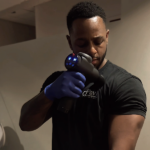Wearable technology has gone from being a niche interest for the gadget-fixated to a popular type of product relevant to all kinds of consumers. Wearable devices have found a wide range of applications, from tracking fitness levels to monitoring health conditions and providing certain functions to people with disabilities.
Wearable devices and wellness
From the FitBit to more specialized devices like swimming trackers, wearable technology and wellness have become inextricably linked. The ability of wearables to collect data about a person’s fitness for analysis either later or in real-time has significant implications. Wearable devices can count the number of steps you take throughout the day, the number of miles you run or laps you swim, and your heart rate, blood pressure, and blood oxygen levels. They can also measure things that are harder to track objectively, such as sleep.
Wearable devices and healthcare
As well as being useful for healthy individuals who want to be even healthier, wearable devices can be used to track the progress of people with illnesses or chronic conditions that require monitoring. The great advantage of wearable technology here is that it can alert patients and medical professionals to potential issues before symptoms emerge. Such a device can also perform other useful functions, such as summoning help if a patient becomes incapacitated.
Social benefits of wearable devices
A wearable device gives the user a convenient way in which to stay connected with others. In the case of wearable health trackers and monitors, family members can keep track of each other’s well-being. Relatives of a vulnerable individual can check their family members’ vital signs and reassure themselves that their loved one is in good health.
Wearable devices also allow parents to monitor children or other caregivers’ whereabouts to track the location of vulnerable individuals in their care. Many devices are now produced for this exact purpose.
Wearables in the workplace
In the workplace, wearables can monitor staff activity and also provide useful functionality. For example, a wearable tablet can be used to scan inventory, take notes, and disseminate information between different departments. Wearable devices can be used to provide identification for workers entering or leaving sensitive locations. Monitoring the fitness and activity levels of staff may also lead to a more health-conscious workplace, with fewer work-related illnesses and injuries.
Health downsides of wearable devices
Some critics have expressed concern about the long-term wearing of wireless-enabled devices. Although research is heavily disputed, some point to evidence that wireless signals might have untoward effects on the human body. Major health organizations, however, consider these to be safe.
Another possible health downside is the potential for false positives and unnecessary concern over health based on data from wearable devices. The layman’s understanding of the information from a device will be less detailed than that of a medical professional. This means that a device user is more apt to mistake ordinary fluctuations in their heart rate or other readings for signs of ill-health. This can lead to needless anxiety on the part of the patient and wasted time and effort in seeking medical attention.
Social downsides of wearable devices
In the workplace, staff may be subjected to unnecessarily intense scrutiny if their every movement can be recorded by their employers. While data on employees’ activity and fitness could be used to support a more health-conscious workplace, it could also be used to identify staff members with possible health issues and target them for illegal discrimination. Individuals may suffer similarly if their movements are monitored by a family member. Another concern is data security. It’s essential to ensure that only authorized individuals and organizations have access to data from wearable devices. As wearable technology finds its way into more aspects of our lives, it’s important to take stock of how this may impact not just individual health, but society as a whole. Ultimately, it’s up to us as a society to determine how wearable technology should be used. Personal and collective responsibility will be critical.
Tap for recommended posts on the tags you don’t follow






